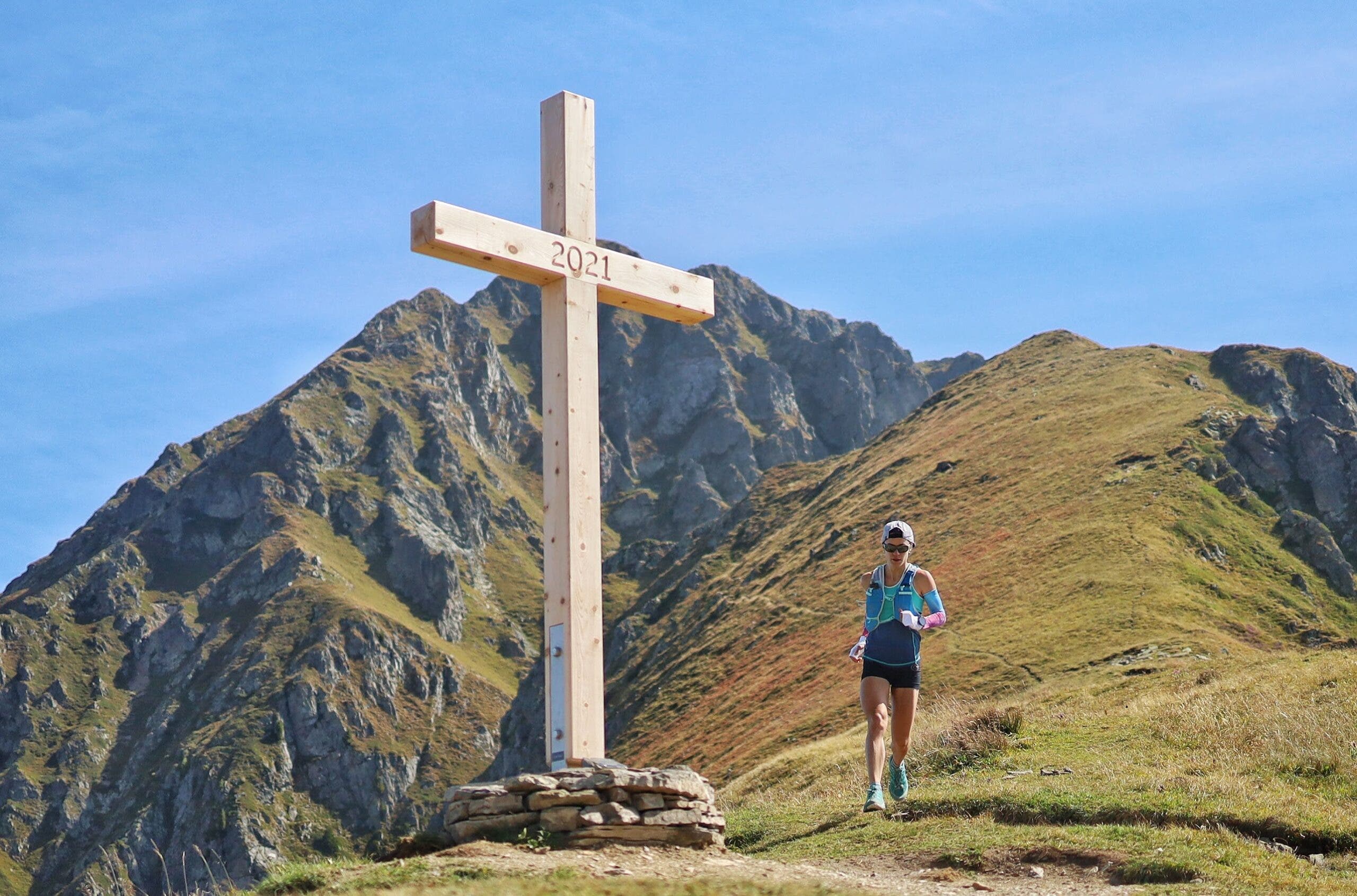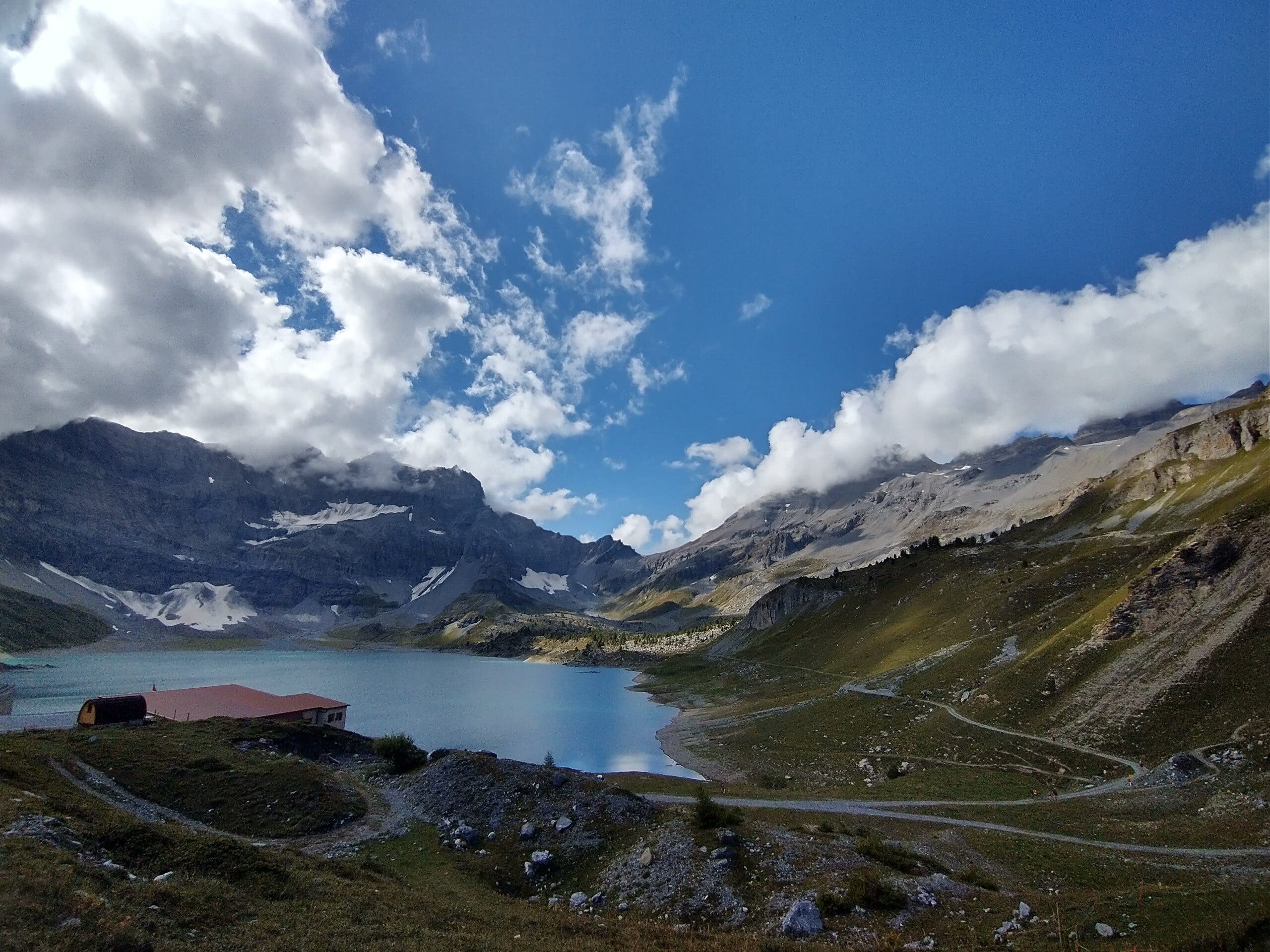This Race Is 50 Years Old And Going Strong

Archival photo from the 1970 race
In the last week of August, 1964, several dozen mountain runners set off on a 44-kilometer race around Switzerland’s Dents-du-Midi range, a remote and dramatic craggy ridgeline of seven summits not far from the country’s border with France in the French-speaking Valais region. No photos remain from that original race, but even six years later in 1970, the look is dramatically different from trail runners of today: leather boots with lugged soles, canvas backpacks, and sweatpants.
Those pioneers took place in the first official trail race in the Alps, the Course des Dents-du-Midi, which this fall celebrated its 50th running.
The Alps’ first trail race began thanks to a convenient historical accident, the unanticipated consequence of two projects in the region. The first was an effort by local residents to create a path around the range, considered one of the most beautiful in the Alps. The region was turning to tourism, and a footpath that took advantage of local mountain huts was high on the list.
RELATED: Meet The Man Who’s Finished 761 Ultras
The second project grew from a need on the part of Switzerland’s famous mountain troops to find a winter training ground. Mountain soldiers trained hard for the country’s ski mountaineering races. Competitiveness among the regional troops inspired local soldiers to seek out a high mountain route on which they could train.
Current “DDM” race Director Gil Caillet-Bois’ father, André, missed the inaugural edition. At 19, he was too young for the mandatory military service that would have allowed him to take part. But he was at the start line for the second and, incredibly, the next 39 editions, until retiring from racing in 2014 at age 73. “My first race in1965, I did it without any specific preparation with my army colleagues . I suffered a lot, and I promised myself that I would come back the following year well-trained,” Said the elder Caillet-Bois. “Since those days, my passion for mountain running has never left me. I don’t race anymore, but I do still run 3 to 4 times a week.”
Today, DDM still runs along nearly all of that original route. It totals 57 kilometers with 12,150 feet of climbing. There’s also a relay, a shorter 32 km race on the second half of the course, a 13 km race and a kid’s run. The focal point for the events has shifted to Champéry, a classic Swiss village of just 1,259 year-’round residents at the base of the Dents du Midi massif.

A Run Through History
Trail racing in the Alps in 1964 was practically a revolutionary act. Mountain running was frowned upon. “The thinking was, if you had the energy and time to train, then perhaps you were not working enough at your job!,” explains Caillet-Bois. “It wasn’t the good thing that it is today.” His father often trained at night, to dodge the disapproving looks of his neighbors. Compounding matters was the belief among Swiss doctors of the era that running for long periods in the mountains was unhealthy. “Runners from that era did it out of pure passion,” says Caillet-Bois. “All they wanted was to run in the mountains.”
Their passion, it seems, powered them well. The times from the earlier editions of the race were as fast as today’s fastest participants. Racers covered the first half of the course– 22 km and 7,320 feet of climbing– in 2:28 in 1968. It’s a downright shocking number that is as fast or faster than many of today’s elite runners, especially given their old-school footwear. Caillet-Bois speculates those early runners were likely faster on the downhills than today’s top DDM racers.
This year’s golden anniversary race featured a two-day reenactment along the course, with participants dressed in period mountain clothing from the early 1960s. In total, one thousand runners took part in the five different events. 150 volunteers staffed the course. The weekend closed with a celebratory dinner in Champéry.
Among the starters for the original 57 km course this year were US runners Brian Tinder and Maria Dalzot. Tinder, 41, from Flagstaff, Arizona, first ran DDM in 2014, and has now tallied six finishes, including two second place results. “I fell in love with the community and the quintessential Swiss scenery,” he says. “DDM is the largest low-key trail race you will ever see. It still feels chill and intimate. Running through the small villages and passing by the huts, you get to experience the huge hearts and love of the locals. It is not uncommon,” Tinder notes, “to have to push a cow or a sheep out of the way so you can move forward.”
For Dalzot, it was her first go at the race. From Bellingham, Washington, the La Sportiva-sponsored athlete has competed in Europe for the US Mountain Running Team, at the Mont Blanc Marathon and UTMB’s OCC race. For five weeks, she trained opposite the Dents du Midi range, in a small mountain hamlet high above Champéry. The race, says Dalzot, was a “unique challenge for me, not just physically but mentally. I have a fear of heights and exposure, so this course really required me to face my fears and conquer mental demons.” Her training paid off — Dalzot placed second for the women and 25th overall.
RELATED: A Glaciologist in Chamonix
Her take on the oldest trail race in the Alps? “DDM is different from trail running and racing in the US because it has steep and long– miles long– climbs. The scrambling and use of chains to navigate is unlike anything you find in US races. You weave in and out of small mountain towns while being cheered on by real cow bells and festive music. While en route you pass through cow fields and the cows look at you curiously, taking their time to step off the trail. “

To this day, DDM relies heavily on volunteers, including an active committee of eight that work year round, managing the relationships with the ten different communities through which the race passes. Caillet-Bois estimates he has answered 400 emails in the last few months. But the organization is proud of their work. “Not one Swiss franc is spent on the committee,” he says. Still, it’s clear that the work is taking its toll on key committee members, and the race is considering sharing a part-time staffer with other regional trail races in a similar situation.
The race had not always been so well organized. For eight years just after the turn of the century, it was on pause due to a lack of volunteers. Caillet-Bois, who himself has run the course several times, took over in 2017. Since then, and thanks to a rejuvenated team, the event has been growing steadily.
This year, for the first year ever, that all-volunteer race committee didn’t receive a single negative comment. In an era when many trail races in the Alps are cashing in on the rapid growth of the sport, Dents-du-Midi remains wonderfully low-key and authentic. At the close of the season, Caillet-Bois received three messages from different European elite runners who had taken part. “They said, essentially, ‘Please stay the same, don’t change a thing,’” says Caillet-Bois. “For me,” said Caillet-Bois, pausing to reflect on the many years of the race and the great work of the race committee, “this was the best news I could get.”